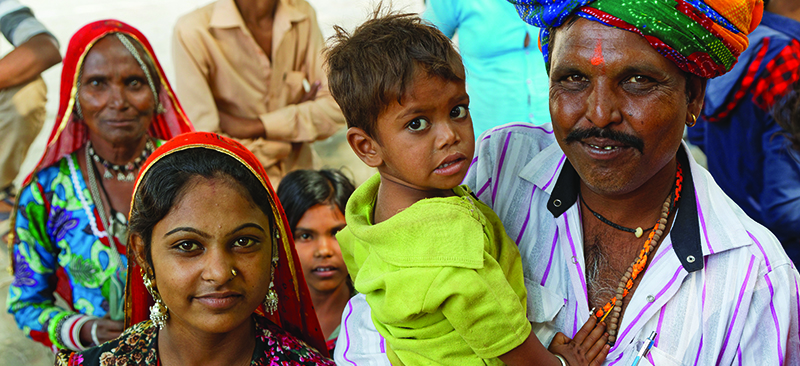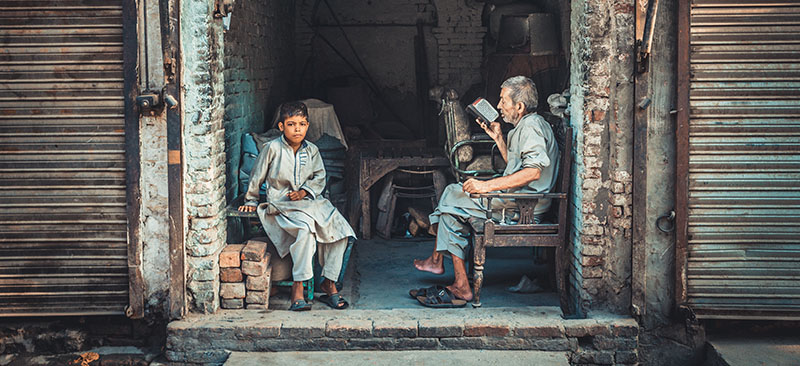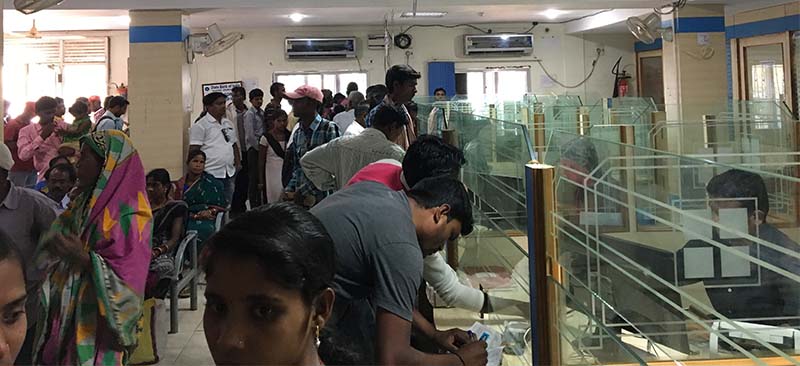Microinsurance in India is at a crucial juncture. Poised for new regulatory regime in one side and pressurised to perform on profitability expectations on others, the microinsurance sector may soon witness innovations of different kinds in India. Premasis Mukherjee of MSC and Rosalind Piggot discusses the issues with Indian microinsurance sector in reference to Securing the Silent, the sector study on microinsurance in India.
Blog
Microinsurance—Is it working yet?
Depending on who you talk to, microinsurance is
either
an extraordinary opportunity—the 500 million lowest-income policy-holders currently insured will likely double to over one billion by 2020: annual growth rates are 10% in some African countries and 15-20% in India, according to the ILO’s Microinsurance Innovation Facility’s Protecting the Poor, Current Trends in Microinsurance.
or
this relatively inexpensive way for very poor people to protect themselves and their livelihoods and is one of those North-Meets-South conundrums that no one has really figured out yet.
The large northern insurance companies, faced with sluggish growth and aging and unprofitable demographics at home look with increasing favour upon the much younger 2.3 billion in the developing world who can pay little and often pay irregularly, but nevertheless represent far more encouraging prospects in life, health, disability, crop, weather, and asset protection.
There is also a growing entente cordiale in many emerging markets—where regulatory constraints are often less stringent—between governments, telecoms, banks, non-governmental agencies, and insurance groups to develop mutually profitable solutions and open new distribution channels for the previously uninsurable.
Tigo, a phone carrier in Ghana, partners with MicroEnsure to offer more life insurance options with increased mobile use. Easypaisa, a Pakistani branchless banking service, and a unit of Norway’s Telenor Group are launching free life insurance for their clients in cooperation with Adamjee Life. Meanwhile, India’s Insurance regulator IRDA has relaxed written bank confirmation requirement as a proof of residence for rural micro-insurance policy seekers.
And yet nagging doubts seem to remain. We’ll look first at why customers hesitate to sign up.
- Trust and benefits: Why would a subsistence farmer hand over any of his limited resources to an outside party to insure against drought especially when pests and crop-price fluctuation or a health emergency can wreak equal or worse havoc on his fragile enterprise? Ignoring specific local needs is also a problem (insuring a house is a far lower priority in many areas than safeguarding a shop or livestock). And the lag time involved in filing for and receiving claim benefits is perilously long for too many.
- Local alternatives: A significant percentage of potential policyholders already belong to funeral societies, self-help groups, and other community mutual-fund schemes. They see no compelling reason why a microfinance sponsor and international management of risk and actuarial tables work more reliably or are more cost-effective than their village options or, for example, LIC India (Life Insurance Corporation of India).
- Cost and liquidity: This may be the most important deterrent. Even those who would prefer the more formal and long-term structure of a microinsurance contract may be hard pressed to find the cash initially and on a monthly basis. Most premium payment schedules are still not designed to accommodate the uncertain and fluctuating incomes of the very poor.
- Fraud and “moral hazard”: Figures are fuzzy when policies, people, and places can differ so radically, but the Rural Finance Learning Center is willing to estimate fraud at $6.5 billion per year for agricultural insurance alone. Cheating an insurance entity that lies well outside the policyholder’s inner circle is understandably tempting for some. “Moral hazard” is an insurance term for neglecting livestock or allowing flammable kerosene to ignite for the hefty payouts. But the inspection and personal responsibility safeguards set in place to deter such fraud chafe—and the trust relationship, so essential in any insurance agreement, can quickly erode.
Other issues impede the success of ensuring the very poor as well. MicroSave addresses them in detail in Securing the Silent: Microinsurance in India, the world’s largest microinsurance market (of the estimated 500 million current policyholders, well more than half are in India). This is where you turn to understand costs, profitability, and the long-term sustainability of microinsurance in a country where credit is still the real driver of microfinance and claims ratios can exceed 100%. In too many instances, the bold new initiatives, starring large insurance companies and local microfinance institutions, have detoured and become merely operational risk covers for the MFIs.
A MicroSave India Focus Note Challenges of Microinsurance outlines the strategic and insurance product issues, including low penetration and low commissions in many markets versus relatively high fixed costs of administration and distribution, high risk for the underwriters, and the distribution problems migratory populations impose. You can also read more about which microinsurance products sell well (or poorly), where, and why and the evolution of market trends in these reports.
Microinsurance is an important alternative to the Faustian pact borrowing seems to represent in many low-income communities. These publications help explain the financial and regulatory underpinnings of what goes wrong with the partnerships and policies, the reasons why, and how we might begin to think about them differently.
Role of information sources in financial capability
The key to understanding poor people’s financial management is to understand how they make decisions and what influences the decision making. This research explores the role of information sources in poor households’ decision making processes.
Can money buy you happiness?
This report investigates how low income working age respondents think of old age and how they prepare for it. While many know that they can no longer rely on the extended family, few are able to prioritize old age provisioning.
Searching for metaphors of household financial management
This report summarises the intent, activities, outputs and key lessons from an ambitious program of field work which sought to capture vividly and succinctly the essence of how ordinary people think about the management of their money and resources.
Paint by numbers: Profiles of bank agents in India
India’s financial inclusion efforts remain in a difficult transition period. And agents, or business correspondents, as they are known here, are not the all-purpose, “last link” solution everyone had imagined between banks and low-income, remote or migrant customers.
Despite the Reserve Bank of India’s (RBI’s) commendable efforts to move financial inclusion aggressively forward (this year’s target is ~200,00 agents, a fourfold increase from 2011), almost no one immediately involved with these efforts is happy right now. (Please also see MicroSave’s blog on RBI’s new, more relaxed rules regarding businesses and banking licenses.)
It has been tempting in some circles to imagine that agents and their managers are simply not trying hard enough. Both are too easily discouraged and too quick to complain when easy profits are not forthcoming.
One reason for these assumptions is that much of the evidence thus far has been either anecdotal and qualitative, or one-sided (usually from the banks’ or microfinance institutions’ perspective).
MicroSave decided that a careful look at the agents’ books might help all parties better understand the specifics of the underlying problems and how best to address them. (Please see MicroSave’s Rapid Agent Assessment for more details.)
The specifics do indeed help explain the agents’ discontent.
Urban business correspondents who offer migrant-worker remittance services, the most lucrative source of revenue, in shops that attract constant traffic can clear almost Rs.10,000(~US$185) in monthly profits. But these instances are rare (only 2-3%).
The more normal situation for these agents is close to break-even with little hope of achieving their net-income expectations of Rs.20,000-30,000 per month. Rural agents fare far worse with less access to remittance income and markedly lower commissions (sometimes by as much as a factor of 10).
Agents’ books also reflect:
- Erratic commissions and late payments;
- Technology delays that cost them money and customer trust;
- Little support for marketing and advertising;
- Even less contact with the banks they are representing.
The agents’ managers aren’t making money either. Their woes include:
- Low/no cooperation with the banks;
- Agent inactivity, which MicroSave estimates to be as high as 73%, and churn (many new agents quit after nine months or sooner);
- Unreliable bank servers and connectivity, particularly in rural areas;
- Liquidity management, insurance, security risks for both their cash-in and cash-out agents;
- Late bank payment of agent commissions.
 Perhaps the worst indictment of the agents’ role in financial inclusion, however, is that the intended beneficiaries—poor people without access to full banking services—are also unsatisfied. Most would preferto deal with local agents they know, especially if they are more patient with the illiterate and elderly.
Perhaps the worst indictment of the agents’ role in financial inclusion, however, is that the intended beneficiaries—poor people without access to full banking services—are also unsatisfied. Most would preferto deal with local agents they know, especially if they are more patient with the illiterate and elderly.
Nevertheless, the almost daily server downtime, plus high agent turnover in many areas, mean rural customers in particular have two unappealing choices: a less than trustworthy agent and transaction, versus the travel time and long queues involved in making deposits and withdrawals at bank branches a far remove from their village.
A number of solutions are under discussion including better agent training, improved incentives, and shared insurance that helps protect agents’ liquidity risks at lower costs. The real dilemma, of course, is human fallibility. India’s finance ministry has committed to doubling the number of ATMs to 200,000 in every corner of the country by the end of next year, despite the high costs of installation and maintenance, at least in part due to the insoluble problems posed by agent networks.
However, for the foreseeable future, two lakhs worth of ATMs can hardly hope to serve the needs of 1.2 billion citizens, of whom ~41% remain unbanked, according to the Bank of India. Agents, like the poor, will probably always be with us. Better solutions for these last links are important for financial inclusion to move forward and succeed.





